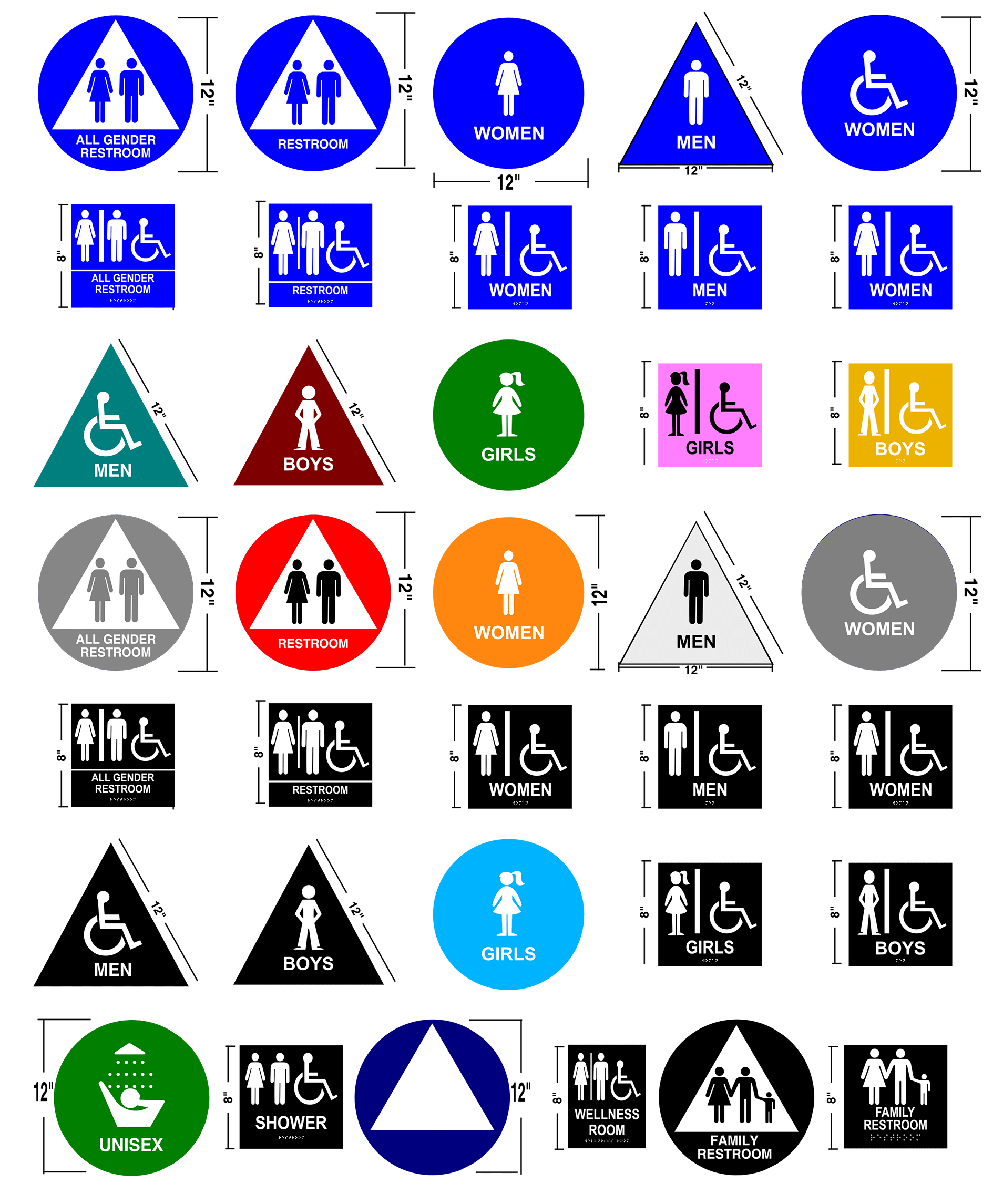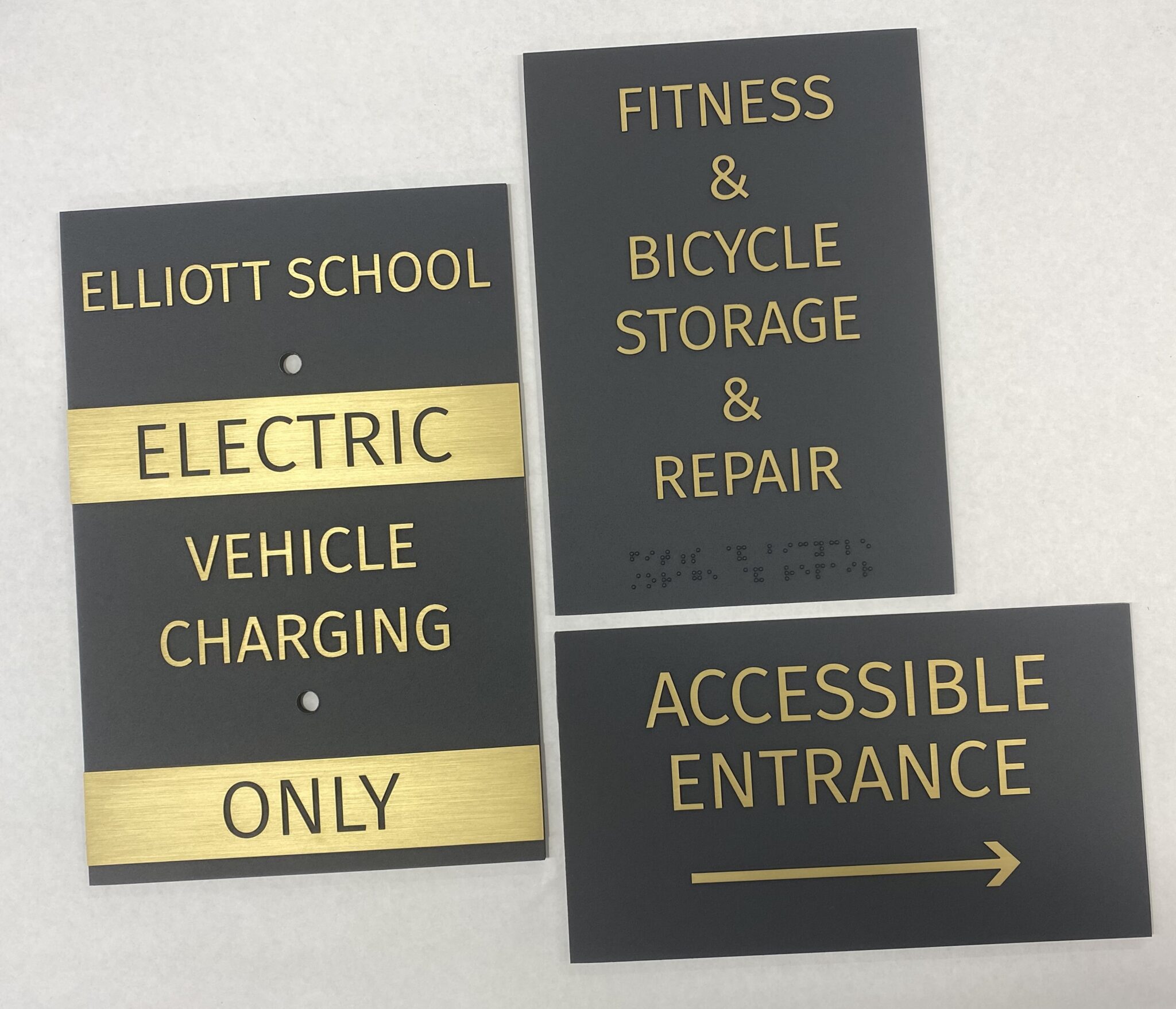ADA Signage: Guaranteeing Accessibility and Compliance in Public Spaces
ADA signage plays an important function in assuring ease of access and compliance within public spaces, dramatically contributing to a comprehensive setting for individuals with impairments. As we explore the subtleties of ADA signage, from tactile attributes to design details, it's crucial to take into consideration exactly how these elements integrate to promote the civil liberties of all individuals.
Importance of ADA Signage
In modern society, the importance of ADA signage prolongs beyond mere compliance with lawful mandates to symbolize a dedication to inclusivity and access for all individuals. These signs are necessary in developing environments where people with disabilities can navigate public spaces with the very same convenience and freedom as those without handicaps. By supplying clear and standardized information, ADA signs guarantees that every person can access facilities, solutions, and information without barriers.
The significance of ADA signage lies in its ability to improve the lifestyle for individuals with impairments by advertising equivalent access. It gets rid of the obstacles that might or else impede their capacity to participate completely in area life. Additionally, these indicators offer as noticeable indicators of an organization's devotion to diversity and equality, showing broader societal worths that champion the civil liberties and self-respect of all people.
In addition, ADA signs plays a critical role in public safety and security. By directing individuals to leaves, bathrooms, and other crucial facilities, it ensures that all people, despite physical capacity, can leave safely throughout emergency situations. In recap, ADA signage is not simply a governing requirement yet an effective tool for promoting a equitable and comprehensive society.
Key Aspects of Compliance

Positioning is crucial; indications have to be installed in locations that are easily visible and obtainable. Generally, signage ought to be placed in between 48 and 60 inches from the ground to make sure access for both standing and wheelchair customers. Responsive components, such as Braille, are vital for individuals with aesthetic impairments, providing vital information in a non-visual style.
High-contrast shades in between the message and background are essential to improve readability for people with reduced vision. The ADA mandates specific contrast ratios to make sure quality. In addition, character size is a key consideration, with minimum height needs dictated by the checking out range to make sure readability from numerous angles.
Style Considerations for Ease Of Access
Designing accessible signage calls for a precise approach to guarantee it fulfills the needs of all individuals, especially those with specials needs. This entails thinking about different layout components that improve readability and functionality. Key factors include the option of font style, color comparison, and tactile attributes. Fonts must be sans-serif, with easy and clear letterforms, to promote very easy analysis. The dimension of the message is similarly vital, with ADA standards suggesting a minimal elevation based upon viewing distance to ensure clarity.
Contrasting shades in between text and background are essential for presence, specifically for individuals with aesthetic impairments. A high comparison ratio aids distinguish the message from its history, recommended you read enhancing readability under my latest blog post numerous lighting conditions. In addition, responsive aspects, such as Braille and raised personalities, are vital for individuals who are blind or have low vision. These elements need to be located at a constant height and position to make certain very easy gain access to and comprehension.
In addition, the positioning of signage plays a substantial duty in accessibility. Indicators ought to be installed in places that are easily obtainable and unobstructed. Guaranteeing that signage is placed at suitable elevations and angles makes it possible for all individuals, including those utilizing mobility devices, to interact with them effectively.
Common Mistakes to Prevent

One more common mistake is the wrong positioning of signs. ADA guidelines specify specific height and location needs to make certain that indicators are conveniently noticeable and reachable by all individuals, including those making use of mobility devices. Ignoring these standards not only obstructs ease of access yet also risks non-compliance with legal requirements.
In addition, not enough contrast in between text and background is a constant oversight. Ample contrast is important for readability, specifically for individuals with reduced vision. Designers sometimes select colors that are aesthetically enticing but lack the required comparison, rendering the text challenging to determine.
Last but not least, some designers fail to include responsive elements, such as Braille, which are vital for people who are blind. Omitting click site these functions not just leads to non-compliance with ADA regulations however additionally restricts gain access to for a sector of the populace that depends on responsive details.
Future Trends in Signage
Advancements in modern technology and boosting understanding of inclusivity are forming the future fads in signage layout. As culture ends up being a lot more conscious of varied demands, the combination of smart technologies right into signage is getting traction. Digital signs, for example, is evolving to include real-time updates and interactive features, which can be important in supplying dynamic details in public spaces. These signs usually incorporate touch screens or gesture-based controls, enabling individuals to navigate content tailored to their particular demands.
An additional arising fad is the usage of augmented truth (AR) to enhance user experience. AR-enabled signage can overlay digital information onto the physical environment, providing visually impaired individuals with auditory or haptic feedback. ADA Signs. This innovation not only enhances accessibility yet also develops an appealing experience for all customers
Sustainability is also a significant factor influencing signs patterns. Environment-friendly materials and energy-efficient illumination remedies are being prioritized to align with global environmental goals. Advancements in products science are leading to the development of more weather-resistant and durable indications.
Conclusion
ADA signage plays an essential role in assuring availability and compliance within public spaces by incorporating responsive components, high-contrast colors, and critical positioning. The adherence to ADA standards not just facilitates safe navigating for individuals with disabilities yet likewise indicates a company's devotion to diversity and inclusivity. By preventing typical errors and welcoming future trends, public spaces can remain to progress these worths, ensuring that the rights and self-respect of all individuals are respected and promoted.
ADA signs plays a crucial role in ensuring ease of access and conformity within public spaces, significantly adding to a comprehensive environment for people with specials needs. As we check out the nuances of ADA signs, from responsive features to make details, it's critical to consider how these components integrate to copyright the civil liberties of all customers.In contemporary culture, the significance of ADA signage extends past simple conformity with lawful mandates to personify a commitment to inclusivity and access for all individuals. By supplying clear and standardized details, ADA signage guarantees that everybody can access centers, solutions, and details without obstacles.
ADA signs plays an important role in assuring access and conformity within public rooms by incorporating tactile aspects, high-contrast colors, and tactical placement. (ADA Signs)